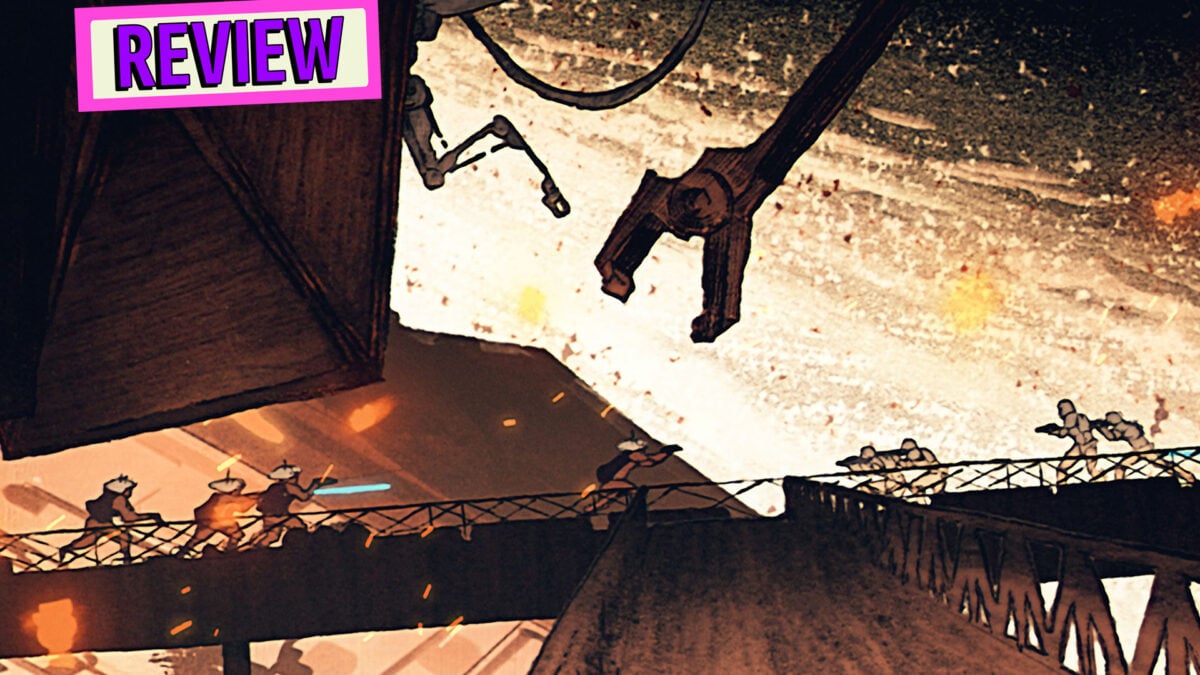Star Wars: Visions, the Lucasfilm anthology series that hands over the keys to the galaxy far, far away to animation teams from around the world to create whatever they want with it, has been predicated on the novelty of the new. Both its first two “volumes” of seasons, one focusing on storytelling from a raft of premiere Japanese studios, the other on teams from around the globe, have been bright spots in a universe of familiarity because of their very nature as brand-new Star Wars: material that is unbeholden to any vision of continuity, material that can imagine any perspective or any scenario, rooted in iconography and concepts we have seen remixed and reworked for generations, to ask the simple question of what Star Wars can mean and can be to a specific set of creators.
Paradoxically, that it has succeeded so well in communicating this vast potential to Star Wars fans has created a problem for the show coming into its third season, which begins streaming today: Star Wars: Visions, and its broad vision of the franchise, is no longer all that new. That’s especially a challenge in this third season in particular, as Visions is not only returning to a Japanese-centric focus for the new crop of nine shorts, but those shorts are made by a near-even mix of returning and new studios from the first season—and further compounding that is the fact that several of the new shorts are direct sequels to shorts from that debut season, too.
It creates an interesting challenge, then, of how Visions can balance this vibrancy it has gained from inviting fresh perspectives into Star Wars with building on the groundwork that made Visions a success in the first place. Is it simply enough for the anthology series to be more, rather than new, now that we have become familiar with it?
It’s a question that, for the most part, volume three and its myriad creative teams are disinterested in directly asking or answering. But it’s a question that lingers in your mind throughout watching the nine new shorts, as the series provides tales that are, in general, satisfying to watch in the moment but broadly struggle to capture the same transformative feeling that made both its two volumes so enchanting to experience.
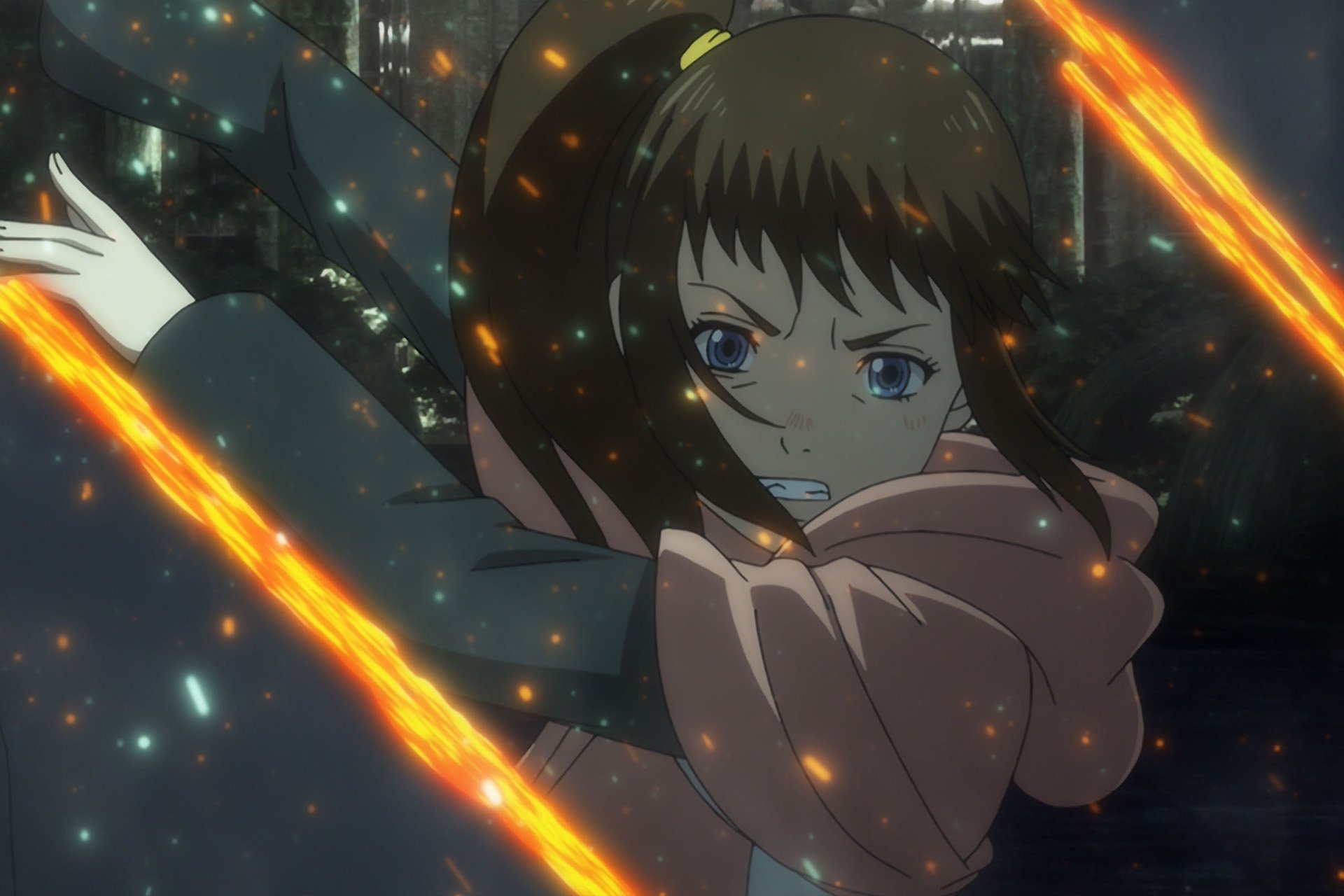
That is not to say that Visions volume three is disappointing—what worked across volumes one and two still continues to work here. There is plenty of jaw-dropping spectacle, from intense action sequences to stunning vistas. There is still plenty of inspiration in transposing Star Wars concepts and designs into new frameworks—either, as volume one did, by reframing them through Japanese design and history to draw on Star Wars‘ enduring connection with Japanese cinema, or just by simply playing with the sandbox that iconography represents. It just doesn’t quite land as enchantingly as it did the first and second times around, but beneath that sheen of newness still lies some incredibly well-done, visually resplendent Star Wars storytelling.
An interesting point to note in that familiar feeling is that, compared to volume two, which broadened its perspective both through international animation studios and in simply the kinds of Star Wars stories it wanted to tell, volume three echoes volume one’s fascination with the Force and Jedi in particular, bringing the balance back towards stories based on duels and mysticism (that’s not to say there aren’t notable highlights that largely eschew those ideas, such as Project Studio Q’s “The Song of Four Wings” or Wit Studio’s “The Bounty Hunter”). But this time that spiritualism feels not just wholly connected to a Jedi/Sith dichotomy, although there’s plenty of that: if a broad theme unites the shorts of volume three, it is the concept of Star Wars as a generational story, of lessons learned and passed on through families, masters and students, and cycles of conflict.
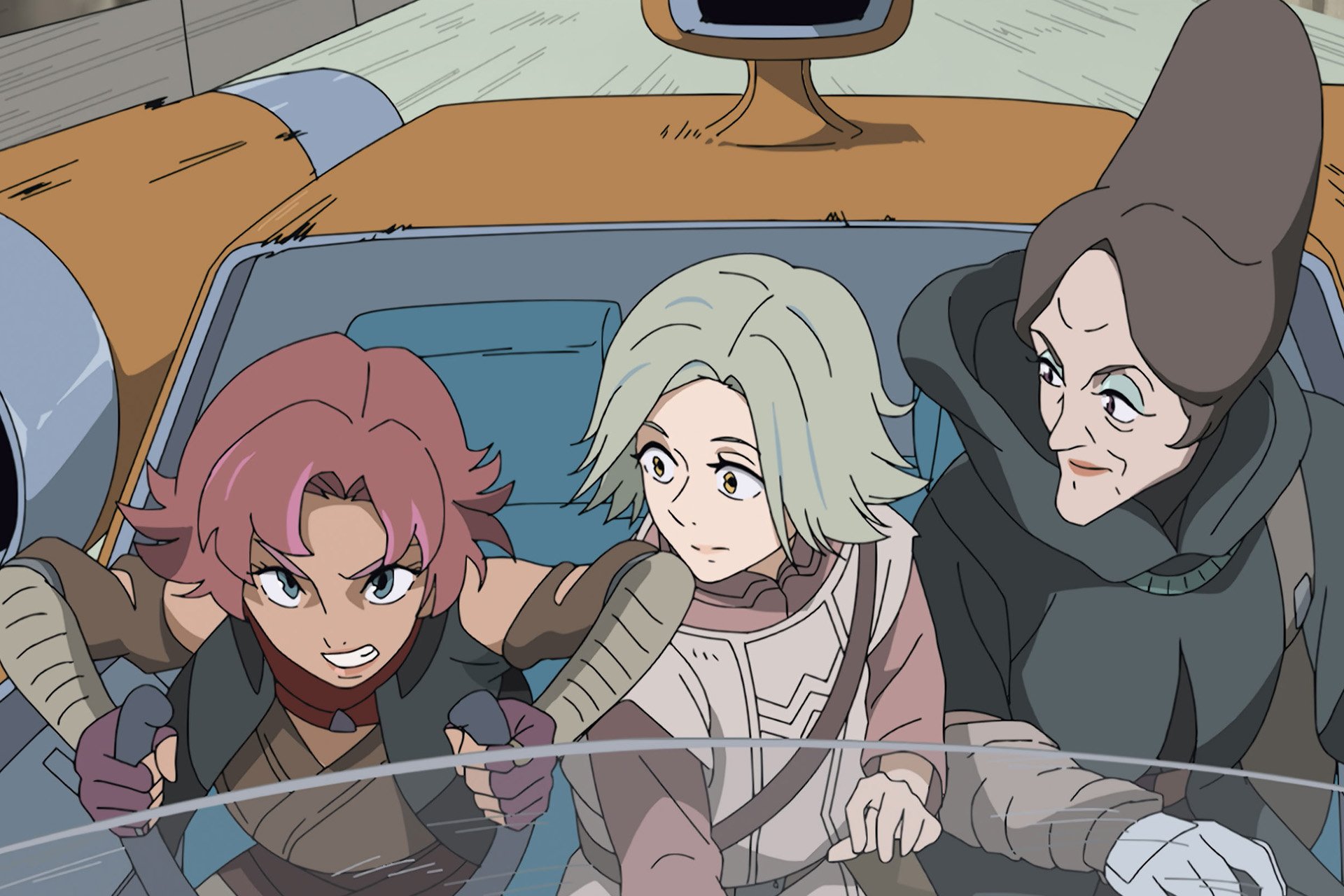
If there is a weakness to volume three, it’s perhaps where that familiarity is most explicit. Three of the nine shorts are sequels, directly or otherwise, to stories from volume one: Kamikaze Douga and Anima’s “The Duel: Payback,” Production I.G’s: “The Ninth Jedi: Child of Hope,” and Kinema Citrus’ “The Lost Ones” (which follows the Jedi F from the studio’s volume one short, “The Village Bride”). While broadly these shorts are solid—”Payback” is the weakest of the three, simply executing a lesser version of “The Duel” and, perhaps unfairly, now has to draw comparisons to Emma Mieko Candon’s incredible Ronin novel on top of that—they do generally sit together to give volume three a feeling of continuity, rather than striving for newness.
Of them all, “The Lost Ones” works best simply by expanding F’s story and world, rather than directly following on from the events of its predecessor as both “Payback” and “Child of Hope” do (the latter literally climaxing with a “To Be Continued” message, presumably in Visions‘ new Visions Presents format announced previously at Celebration Japan). Perhaps Kinema Citrus thought it could balance that out by providing a wholly new concept for another short (the studio also animated the adorable “Yuko’s Treasure” this season), but “Lost Ones” still stands out as a highlight for simply proving that there is space to return to the worlds established in these stories while still doing something that feels additive, rather than iterative.
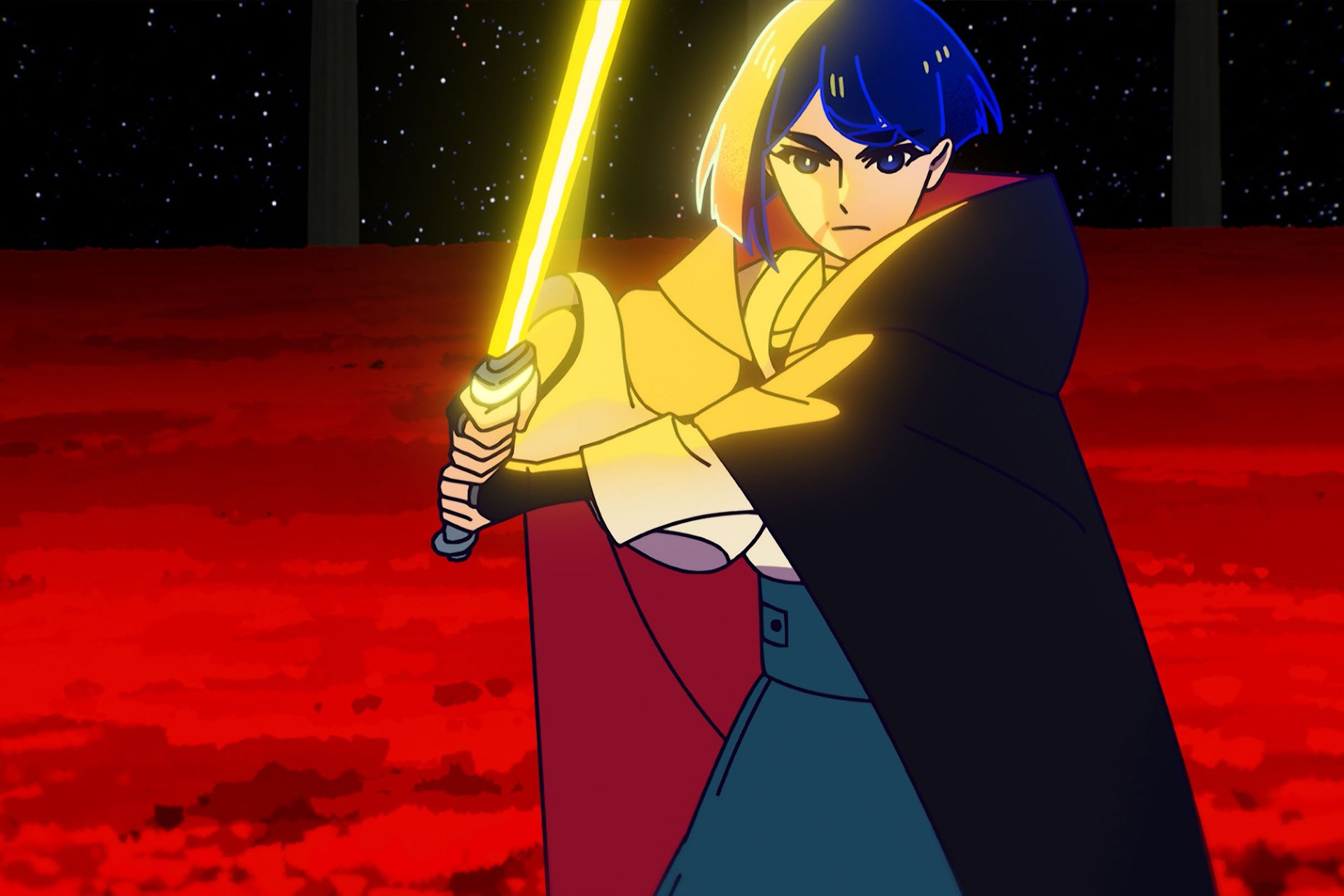
All that, however, does not apply to a singular exception among Visions volume 3’s roster: the final short of the anthology, “BLACK.” If the rest of volume three is a well-executed familiar blanket, David Production and director Shinya Ohira’s 13-minute mood piece is a stunningly captivating shock to the system: alien and new and experimental in the exact ways you would want Visions to strive for.
It feels barely like anything we’ve ever seen from Star Wars—the imagery of the Stormtrooper armor and the machines of the Imperial/Rebel conflict lost in the sound and fury of its manic, mind-bending visuals—and also so unlike anything else from Visions, whether in volume three or otherwise, that it gives “BLACK” a discordant sense, but one that feels incredibly exhilarating in the moment. That it sits at the very end of the season feels intentional in this way—to coax you in with well-done, albeit familiar, slices of animation before “BLACK” overwhelms your senses with a bold story that puts the onus on its audience to interpret and find meaning in it, a free-flowing, hectic, scratchily animated vision of smooth jazz and the human condition locked away in the mind of a Stormtrooper.
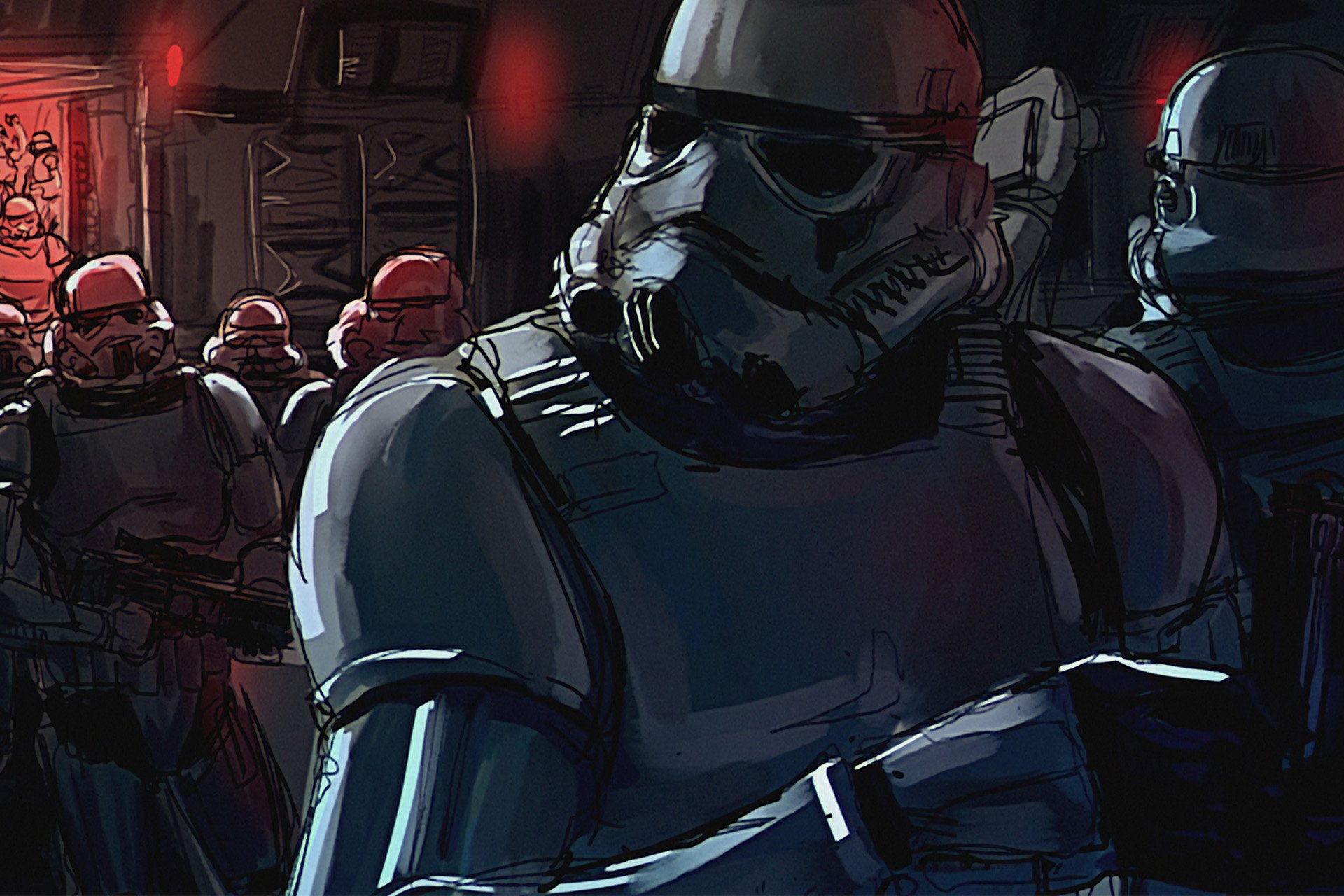
That by far and away the absolute highlight of the season is such a challengingly complex and engaging short, one that transcends into something that feels like an arthouse piece, is the exact reminder that Visions, and anyone who’s been following the anthology along diligently, needed: Visions can do very good, very familiar Star Wars. But it is at its very best when it manages to wow you with something that is completely and shockingly new.
Star Wars: Visions Volume 3 is now streaming on Disney+.
Want more io9 news? Check out when to expect the latest Marvel, Star Wars, and Star Trek releases, what’s next for the DC Universe on film and TV, and everything you need to know about the future of Doctor Who.
First Appeared on
Source link









